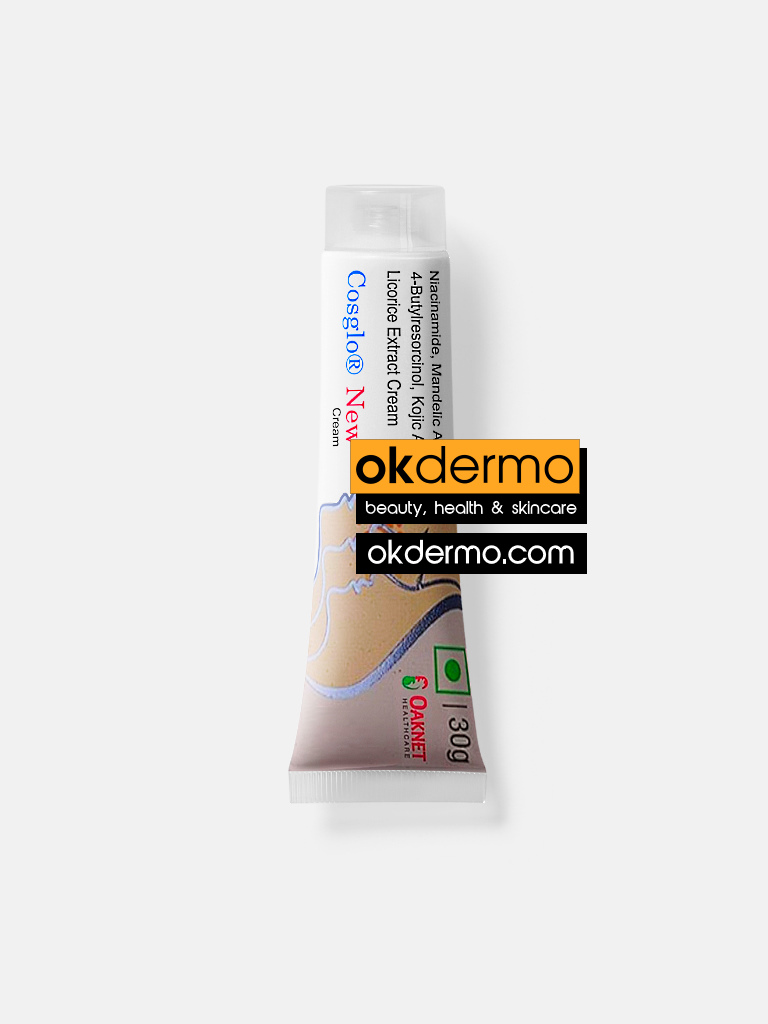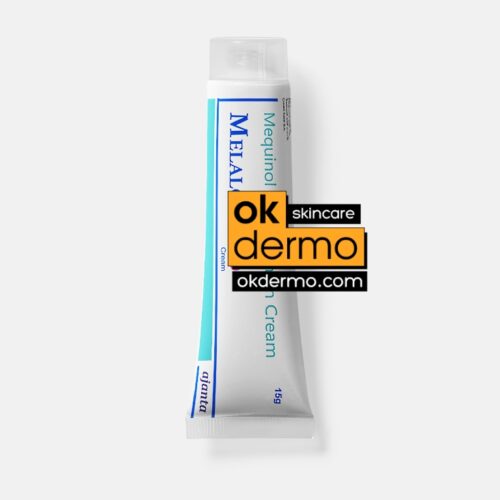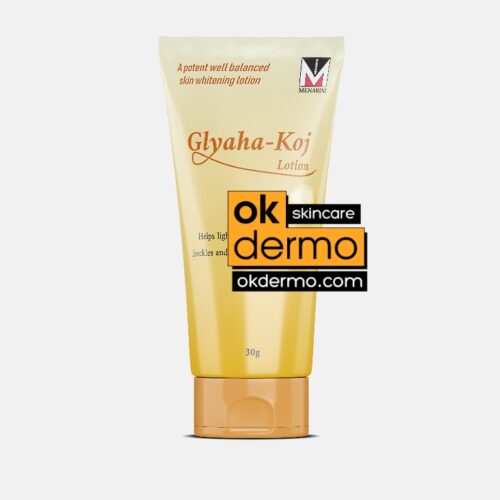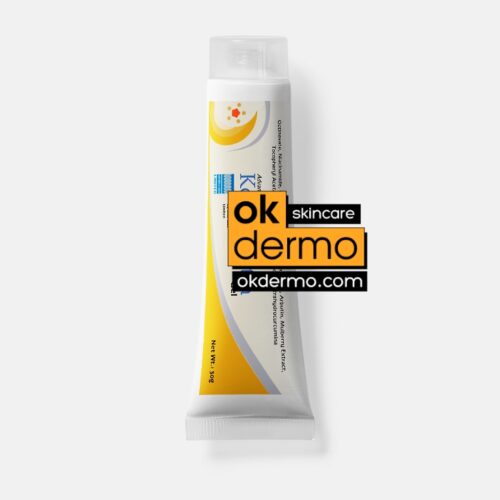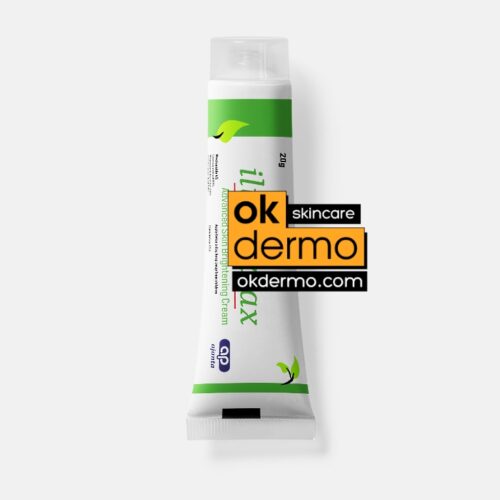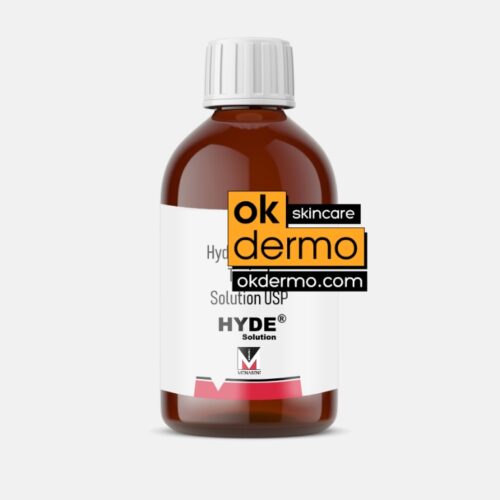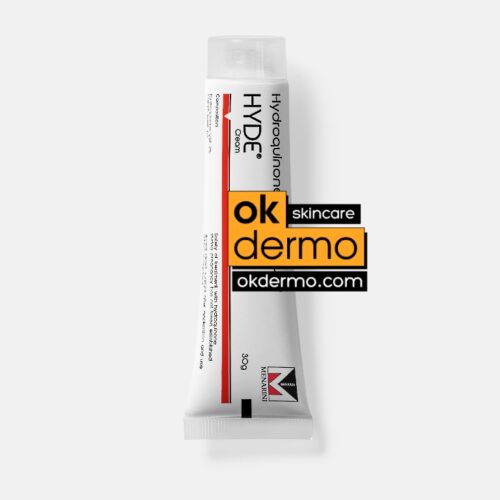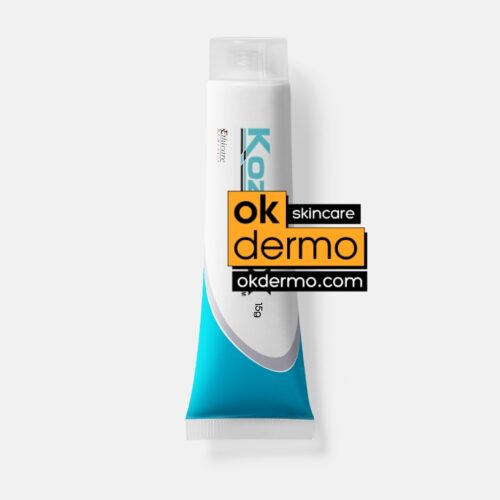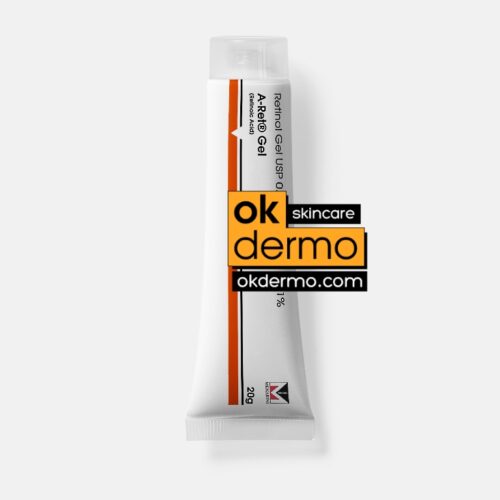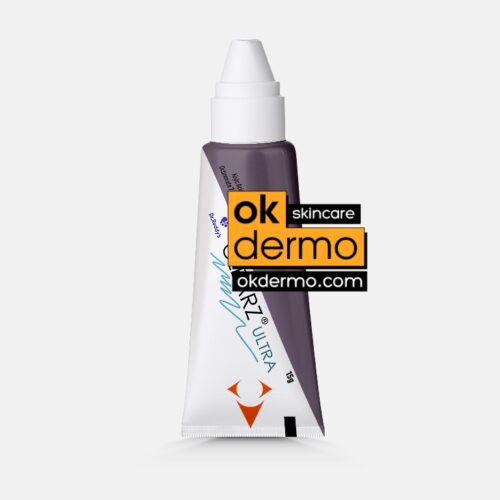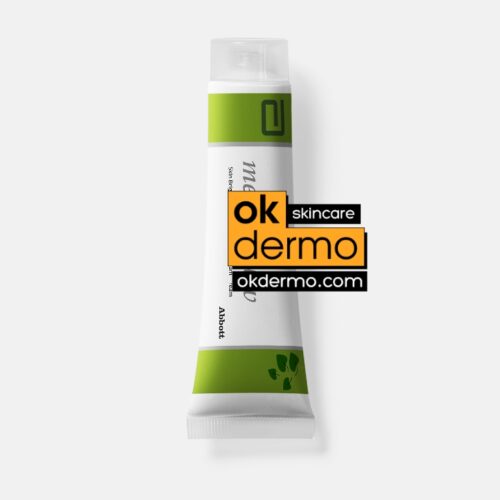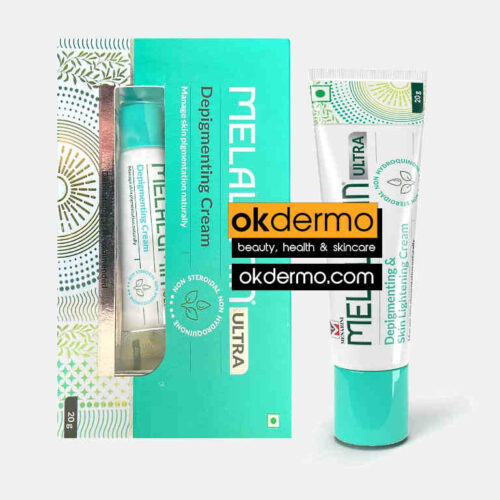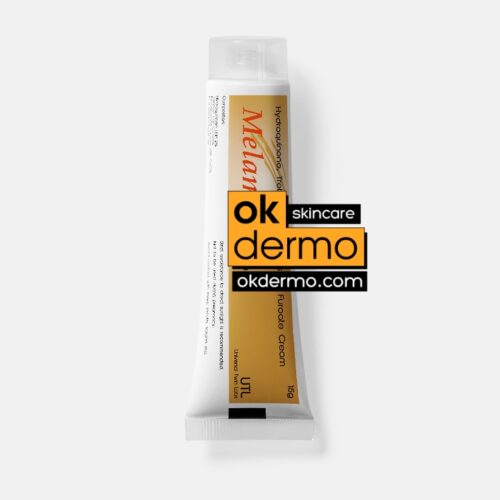Description
What is Cosglo New® Cream
Cosglo New® Cream works by healing wounds and increases the re-establishment of the normal skin. It helps in enhancing the skin deposition of hydrophilic skin-whitening agents, treating or preventing melasma. Shows anti-inflammatory action in the treatment of acne and blemishes. Helps in protecting skin from harmful ultraviolet rays. Helps in improving the wound healing activity. It may help in producing an anti-aging effect on the skin.
Main ingredients of Cosglo New® Cream
Arbutin – is one of the most widely prescribed skin-lightening and de-pigmenting agents worldwide. Arbutin, the b-D-glucopyranoside derivative of hydroquinone, is a naturally occurring plant-derived compound found in the dried leaves of a number of different plant species including, bearberry (Arctostaphylos uva-ursi), blueberry, cranberry, and pear trees.
Arbutin inhibits tyrosinase activity competitively but at non-cytotoxic concentrations in a dose-dependent manner in cultured melanocytes. It also inhibits melanosome maturation and is less cytotoxic to melanocytes than hydroquinone. Although higher concentrations may be more efficacious, a greater risk for paradoxical hyperpigmentation exists. Controlled trials on treating hyperpigmentation are lacking. However, several studies have shown that arbutin is less effective than kojic acid for hyperpigmentation. Deoxyarbutin is a synthesized topical derivative. Studies have shown that it has an enhanced sustained improvement, general skin lightening, and a safety profile is higher than hydroquinone.
4-Butylresorcinol – 4-n-Butylresorcinol is a safe and cost-effective skin lightener. Compared to other skin lighteners, it is much more effective and offers good stability in cosmetic formulations. Alkylresorcinols are widespread in nature and are found in wheat, rye, and other cereals. Our butyl resorcinol is chemically derived. Due to its structure, it has excellent bioavailability and is effective as a skin lightener that also gives an even tone to the skin. It can also be used for age spots and other hyperpigmentation. Synthetic production process to obtain Butyl Resorcinol, very effective skin whitening active for reduction of age spots, inhibits tyrosinase and peroxidase, inhibits melanin production.
Hyperpigmentary disorders like melasma, actinic and senile lentigines are a major cosmetic concern. Therefore, many topical products are available, containing various active ingredients aiming to reduce melanin production and distribution. The most prominent target for inhibitors of hyperpigmentation is tyrosinase, the key regulator of melanin production. Many inhibitors of tyrosinase are described in the literature; however, most of them lack clinical efficacy.
4-Butylresorcinol is a whitening and skin lightening agent with unique characteristics in terms of efficacy and safety on the skin. Hyperpigmentation is due to melanin accumulation, which can occur because of aging or disorders like melasma. The key regulator of melanin production is the enzyme tyrosinase, and therefore this enzyme is the most prominent target for all the whitening agents.
4-Butylresorcinol is a strong inhibitor of tyrosinase and peroxidase/H2O2, effective as a skin lightener and ever-tone for normal and hyper-pigmented skin, and even suitable for Melasma treatment. It showed superior efficacy compared to plant extracts and especially to such products as hydroquinone, arbutin, and kojic acid, the most powerful whitening agents on the market, today forbidden or limited for toxicity reasons. 4-Butylresorcinol is absolutely safe, its whitening power is combined with a strong protective effect against H2O2-induced DNA damage and an anti-glycation property: a synergic action to improve the skin’s appearance. Several clinical studies have proved the strong efficacy of this product in cream, serum, chemical peeling, and skin treatments.
4-n-butylresorcinol has the high inhibitory capacity of 4-n-butylresorcinol on human tyrosinase activity, exceeding by far the potency of hydroquinone, arbutin, and kojic acid. The resulting clinical improvement of skin hyperpigmentations reveals 4-n-butylresorcinol as a very valuable active compound for the management of pigmentation disorders.
Kojic Acid – (5-hydroxy-2 hydroxymethyl-4-pyrone) is a naturally occurring hydrophilic fungal product derived from certain species of Acetobacter, Aspergillus, and Penicillium. It reduces hyperpigmentation by inhibiting the production of free tyrosinase and is also a potent antioxidant. Kojic acid (KA) is used at concentrations ranging from 1% to 4%. There are no RCTs available comparing KA to other treatments. However, because both KA and HQ are tyrosinase inhibitors, the combination augments efficacy as demonstrated in the study by Lim JT where 2% kojic acid in a gel containing 10% glycolic acid and 2% hydroquinone was compared with the same application but without kojic acid. Thus, patients who do not respond to HQ may benefit from the addition of Kojic Acid to the treatment regimen.
Niacinamide – Furthermore, known as nicotinamide (3-pyridine-carboxamide) is the physiologically active amide of niacin (vitamin B3). Niacin is involved in the synthesis of the enzymes Nicotinamide adenine dinucleotide (NAD) and nicotinamide adenine dinucleotide phosphate (NADP) required for cellular metabolism. A study was done on the pigmented reconstructed epidermis (PREP) showed that niacinamide interferes with the interaction between keratinocytes and melanocytes, thereby inhibiting melanogenesis. It also modulates the protease-activated receptor (PAR-2) that is involved in the transfer of melanosomes from melanocytes to surrounding keratinocytes.
Clinical trials using 2% niacinamide have shown that it significantly reduces the total area of hyperpigmentation and increases skin lightness after 4 weeks of treatment. There is a plateau in treatment effect which could be due to the balance between the up-regulation of melanogenesis in the hyperpigmented area and the down-regulation by niacinamide. Alternatively, the plateau could reflect the fraction of the hyperpigmented area that is sensitive to niacinamide treatment. The study also showed that the daily use of niacinamide with sunscreen was effective in reducing hyperpigmentation and in increasing the lightness of basal skin color compared with sunscreen alone.
Sabiwhite™ – is a color-free standardized powdered extract from the roots of the Curcuma longa (Turmeric) plant with skin whitening, anti-inflammatory, and antioxidant properties, as well as providing UVB protection. It scavenges and prevents the formation of free radicals. It also inhibits tyrosinase, which inhibits the skin from producing melanin. This product is color-free, unlike the brilliant yellow color of other turmeric extracts, and can be used in anti-aging, skin lightening, sun care, and after sun care formulations.
SabiWhite® offers effective topical antioxidant protection in a holistic way. The in vitro studies revealed that SabiWhite® offers effective topical antioxidant “bioprotectant” action, efficiently helps to prevent the formation of free radicals, while quenching pre-formed ones as well. This dual-action protects the skin cells from damage by UV radiation. In a randomized, double-blind, placebo-controlled study in 50 human subjects, 0.25% SabiWhite® cream was found to be an effective and safe alternative to 4% hydroquinone cream in the depigmenting formulation. SabiWhite® is safe for topical use with no irritant or sensitization side effects
Nanobright™ – Aqua + Arbutin + Ascorbyl Palmitate + Lecithin + Linoleic Acid + Resveratrol + Rutin + Tocopheryl Acetate + Ubiquinone + Linolenic Acid. Nano Bright™ by Biospectrum acts as a gentle and natural whitening agent. It is extremely powerful in inhibiting tyrosinase activity with no cytotoxicity. It is used for skin color fading and treatment of aged spots, freckles, hyper-pigmentation, and skin discolorations.
Licorice Extract – is also a natural skin lightening agent because its extract contains an active called glabridin, which inhibits tyrosinase, the enzyme that causes pigmentation in response to sun exposure. And with its aforementioned calming abilities in tow, licorice holds the unique power to refine tone without inviting irritation along, unlike the majority of its fellow brightening ingredients.
Mandelic Acid – Mandelic acid may also have some lightning properties for dark spots, such as those seen in melasma. Research shows that mandelic acid may reduce hyperpigmentation in melasma by as much as 50 percent in about 6 weeks. The exfoliating action of mandelic acid removes dead skin cells, which may leave your skin firmer and smoother. Mandelic Acid increased cell turnover and exfoliating properties means the acid reduces the look of dark marks and sun damage.
Vitamin E – is the major lipophilic antioxidant in plasma, membranes, and tissues. The term “Vitamin E” includes eight naturally occurring molecules (four tocopherols and four tocotrienols) that have vitamin E activity. In humans, alpha-tocopherol is the most abundant vitamin E derivative, followed by gamma-tocopherol. Controlled studies with vitamin E show insufficient evidence of effectiveness in the treatment of specific dermatologic disorders. However, there is a large body of experimental evidence proving its photo-protective effects. It has been shown to cause depigmentation by interference with lipid peroxidation of melanocyte membranes, increase in intracellular glutathione content, and inhibition of tyrosinase.
Another clinical double-blinded study showed a significant improvement of melasma and pigmented contact dermatitis lesions using topical vitamins E and C, with the combination showing better results compared to the single-vitamin treatment groups. Although, topical alpha-tocopherol is mostly used at a concentration of 5% or less. Side-effects such as allergic or irritant reactions are rare with topical vitamin E and hence, it is a component of cosmeceuticals preparations.
How to use Cosglo New® Cream?
Cosglo New® Cream is for external use only. Before the application of the cream, cleanse the face with a suitable face wash to exfoliate the dead skin. Cosglo New® is recommended for twice daily application (once during daytime and once during the night) or as directed by a doctor. After the application of Cosglo New Cream, apply sunscreen 30 minutes before stepping out in the sun. Spending time in the sun may increase the severity of melasma.

